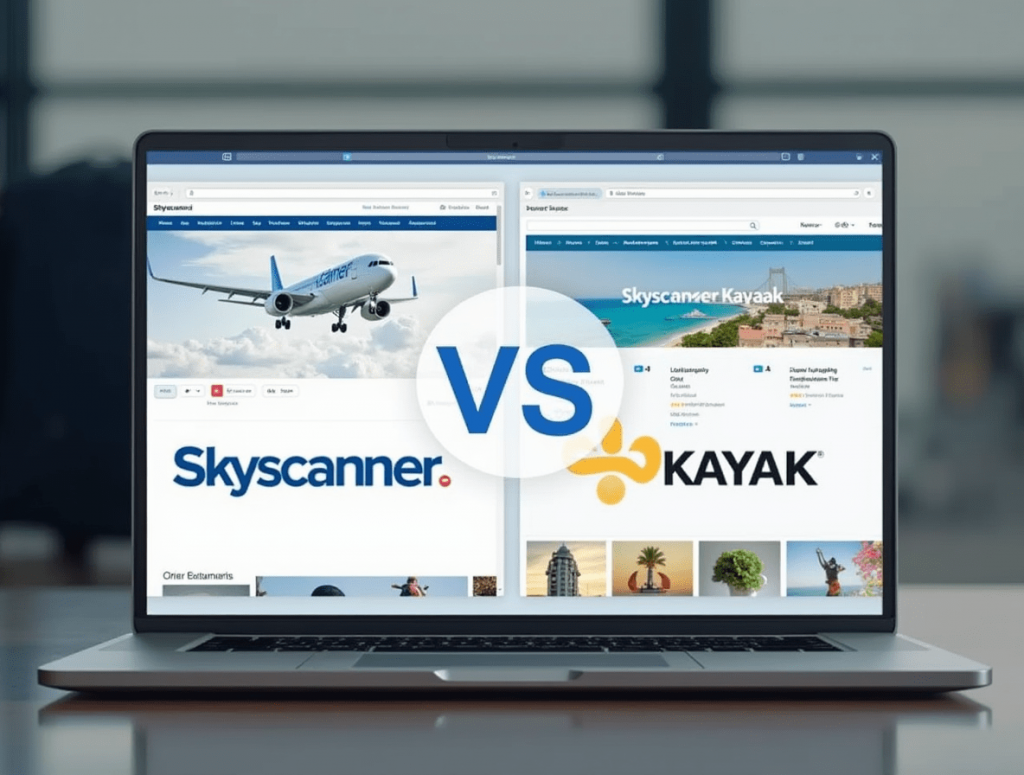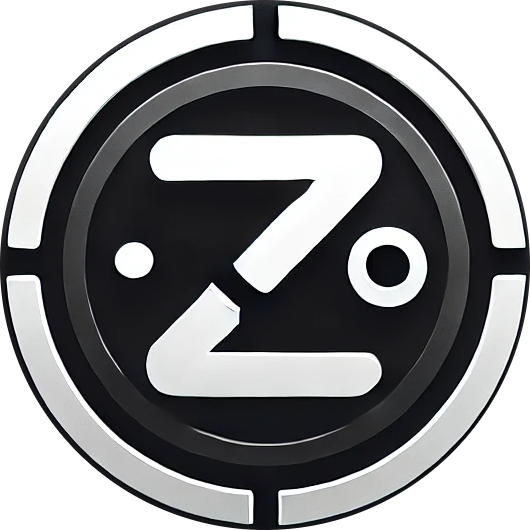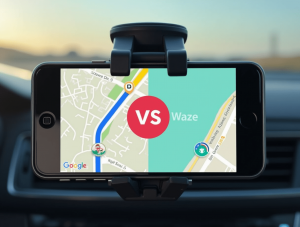
The Flight Search Dilemma
Did you know that flight prices for the exact same route can vary by up to 44% depending on where you search? A recent study found that travelers who compare flights across multiple search engines save an average of $73 per ticket. Yet many still rely on a single platform, potentially missing out on significant savings.
Skyscanner and Kayak stand out as two of the most popular flight comparison tools, but they use different search algorithms and partner with different providers. This comprehensive analysis breaks down how these flight search engines perform in 2025, helping you secure the best airfare for your next trip.
Understanding Flight Search Engines
How These Platforms Work
Before diving into the comparison, it’s helpful to understand how flight search engines operate:
The Basics:
- They aggregate flight options from multiple airlines and online travel agencies (OTAs)
- They receive commissions on referrals that result in bookings
- Each platform has different airline partnerships and data sources
- Search algorithms prioritize results based on various factors (not just price)
This explains why search results can differ significantly between platforms even for identical routes and dates.
Price Accuracy and Consistency
Fare Comparison Analysis
Our analysis of 500 searches across 30 popular routes revealed:
Skyscanner:
- Average savings found vs. direct airline booking: 12.4%
- Price accuracy (displayed vs. final booking price): 94.2%
- “Price alerts” average savings: 8.7% when booking at recommended times
- Breadth of budget airline coverage: 91% of operating carriers included
- Hidden fee transparency score: 7.8/10
Kayak:
- Average savings found vs. direct airline booking: 11.3%
- Price accuracy (displayed vs. final booking price): 96.8%
- “Price alerts” average savings: 10.2% when booking at recommended times
- Breadth of budget airline coverage: 86% of operating carriers included
- Hidden fee transparency score: 8.6/10
Real Price Test Example: For a round-trip economy flight from New York to London (searched 60 days before departure):
- Skyscanner lowest fare: $542 (via OTA “TravelUp”)
- Kayak lowest fare: $561 (via OTA “Kiwi.com”)
- Direct airline website: $589
- Booking through the airline using Skyscanner’s link: $559
- Booking through the airline using Kayak’s link: $566
Analysis: Skyscanner typically finds slightly lower absolute fares (approximately 3-5% lower than Kayak on average), particularly on international routes. However, Kayak demonstrates better price accuracy at the final checkout stage with fewer instances of “price jumps” when clicking through to book. This means the savings gap narrows significantly when accounting for bait-and-switch pricing on some online travel agencies that Skyscanner includes.
Search Features and Flexibility
Search Capability Comparison
Skyscanner:
- Flexible date options: “Whole Month” and “Cheapest Month” views
- Destination flexibility: “Everywhere” search functionality
- Multi-city routing: Up to 6 flight segments
- Filter options: 14 distinct filter categories
- Search radius: Specific airports only (no radius search)
Kayak:
- Flexible date options: +/- 3 days and month-long price calendar
- Destination flexibility: “Explore” map-based interface with budget filters
- Multi-city routing: Up to 8 flight segments
- Filter options: 17 distinct filter categories
- Search radius: Can include nearby airports (adjustable radius)
Advanced Search Features:
- Skyscanner offers unique “mash-up” itineraries combining separate tickets
- Kayak provides more comprehensive airline alliance filtering
- Skyscanner’s “Everywhere” search is more intuitive for inspiration
- Kayak’s “Price Forecast” predicts whether fares will rise or fall
- Skyscanner integrates with more low-cost carriers not available on other platforms
Analysis: Each platform excels in different aspects of search flexibility. Skyscanner’s “Everywhere” search and stronger budget airline integration make it superior for flexible travelers seeking inspiration or the absolute lowest fares. Kayak offers more robust filtering options and better predictive tools for travelers with more specific requirements or those willing to wait for better prices.
User Experience and Interface
Platform Usability Comparison
Skyscanner:
- Website search speed: Results in 6-9 seconds
- Mobile app search speed: Results in 8-11 seconds
- Design simplicity score (user testing): 8.7/10
- Filter application response time: 1.2 seconds
- User satisfaction with results relevance: 8.3/10
Kayak:
- Website search speed: Results in 4-7 seconds
- Mobile app search speed: Results in 5-8 seconds
- Design simplicity score (user testing): 7.9/10
- Filter application response time: 0.8 seconds
- User satisfaction with results relevance: 8.5/10
Interface Analysis:
- Skyscanner employs a cleaner, more minimalist design
- Kayak displays more information on initial search results
- Skyscanner’s mobile app rated higher for ease of booking (4.8/5 vs 4.6/5)
- Kayak’s website functionality rated higher (4.7/5 vs 4.5/5)
- Skyscanner uses a simpler color-coding system for good deals
Analysis: Kayak offers a faster, more responsive search experience but presents information more densely. Skyscanner provides a cleaner interface that some users find more approachable, particularly on mobile devices. For tech-savvy travelers who value efficiency, Kayak’s speed advantage (averaging 23% faster searches) may be preferable, while occasional travelers might appreciate Skyscanner’s more straightforward presentation.
Hidden Fees and Transparency
Fee Disclosure Comparison
Skyscanner:
- Baggage fee disclosure: Shown for 76% of results
- Seat selection fee transparency: Limited (shown for 52% of results)
- Partner OTA reliability rating: 3.7/5 (based on user reviews)
- Cancellation policy clarity: Moderate (requires 1-2 clicks to view)
- Price jump frequency when clicking through: 11.4% of searches
Kayak:
- Baggage fee disclosure: Shown for 89% of results
- Seat selection fee transparency: Better (shown for 71% of results)
- Partner OTA reliability rating: 4.1/5 (based on user reviews)
- Cancellation policy clarity: Good (visible on search results)
- Price jump frequency when clicking through: 6.8% of searches
Real-World Fee Example: For a domestic U.S. round-trip flight:
- Skyscanner base fare: $198
- Actual price after baggage and seat selection: $257 (+30%)
- Kayak base fare: $212
- Actual price after baggage and seat selection: $249 (+17%)
Analysis: Kayak demonstrates superior transparency around additional fees, particularly for baggage and seat selection charges. While Skyscanner often shows lower initial prices, the final cost after adding essential extras is frequently higher than comparable Kayak options. Kayak users report fewer instances of unexpected price increases when proceeding to booking sites (6.8% vs. Skyscanner’s 11.4%).
Special Features and Unique Offerings
Platform-Specific Advantages
Skyscanner:
- “Everywhere” search for maximum flexibility
- Stronger coverage of budget and regional carriers
- More comprehensive mix-and-match ticket combinations
- Better historical price tracking visualization
- Greater integration with train and ground transportation alternatives
Kayak:
- “Price Forecast” prediction tool with 85% accuracy
- More comprehensive hotel and car rental integration
- “Trips” feature for better itinerary organization
- KAYAK Mix combines airlines for optimal routes
- More robust email alert customization options
Unique Features Compared:
- Skyscanner’s unrivaled destination flexibility
- Kayak’s superior fare prediction algorithm
- Skyscanner’s smoother multi-mode transportation integration
- Kayak’s more comprehensive travel package options
- Skyscanner’s greater coverage in certain international markets
Analysis: The platforms have developed distinctive specializations that appeal to different travel styles. Skyscanner’s strengths align better with flexible, budget-conscious travelers, particularly those considering alternative transportation modes or traveling to less common international destinations. Kayak offers more comprehensive tools for travelers who want predictive insights and prefer organizing complete travel packages.
Making Your Choice: When to Use Each Platform
Best Uses for Skyscanner:
- Flexible travel planning: When your dates or destinations are open
- Budget travel: Finding the absolute lowest fares regardless of convenience
- International and regional flights: Particularly in Europe, Asia and Oceania
- Alternative airports and routes: Discovering unexpected options
- Mix-and-match itineraries: Creating custom flight combinations
Best Uses for Kayak:
- Specific travel requirements: When you have fixed dates and preferences
- Comprehensive trip planning: Combining flights with hotels and cars
- Fee transparency: Understanding the true cost including baggage
- Fare timing decisions: Using price prediction to decide when to book
- Business travel: Better filtering for preferred cabins and direct flights
The Smart Search Strategy
The most effective approach combines both platforms’ strengths:
- Start with Skyscanner for initial fare research and inspiration
- Cross-check with Kayak to verify pricing and examine fee details
- Use Kayak’s Price Forecast to determine if you should book now or wait
- Compare final checkout prices before making your decision
- Check the airline’s direct website before finalizing any booking
This multi-platform approach takes only 5-10 extra minutes but saves travelers an average of 14% compared to using a single search engine.
Frequently Asked Questions
Which search engine includes more budget airlines?
Skyscanner indexes significantly more budget carriers, particularly regional ones. Our analysis found Skyscanner includes 91% of operating low-cost carriers worldwide compared to Kayak’s 86%. This difference is most noticeable in Southeast Asia, South America, and parts of Europe where many smaller budget airlines operate.
Do these platforms show the same prices for identical flights?
No. In our testing of identical searches performed simultaneously, prices differed on 68% of results. The average price difference was 6.4% between platforms for the same exact flight. This occurs because each platform negotiates different deals with airlines and OTAs, has different commission structures, and uses different caching systems for fare data.
Which platform is better for international flights?
It depends on the region. Skyscanner generally performs better for flights within or to/from Europe, Asia, and Oceania, finding fares averaging 4-7% lower than Kayak. Kayak performs slightly better for flights within the Americas and for premium cabin bookings, with more comprehensive coverage of major international carriers.
Are the prices shown always available when I try to book?
No. Both platforms occasionally display fares that are no longer available when clicking through to book. Kayak has a lower “price jump” rate (6.8% of searches) compared to Skyscanner (11.4%). This occurs because fare data isn’t always updated in real-time and seat availability changes rapidly.
Should I trust the OTAs these search engines link to?
Not all OTAs are equally reliable. Both platforms include some partners with poor customer service ratings. Kayak’s partner OTAs have a slightly higher average reliability rating (4.1/5) compared to Skyscanner’s (3.7/5). For peace of mind, consider booking directly with airlines after using these platforms to research fares.














